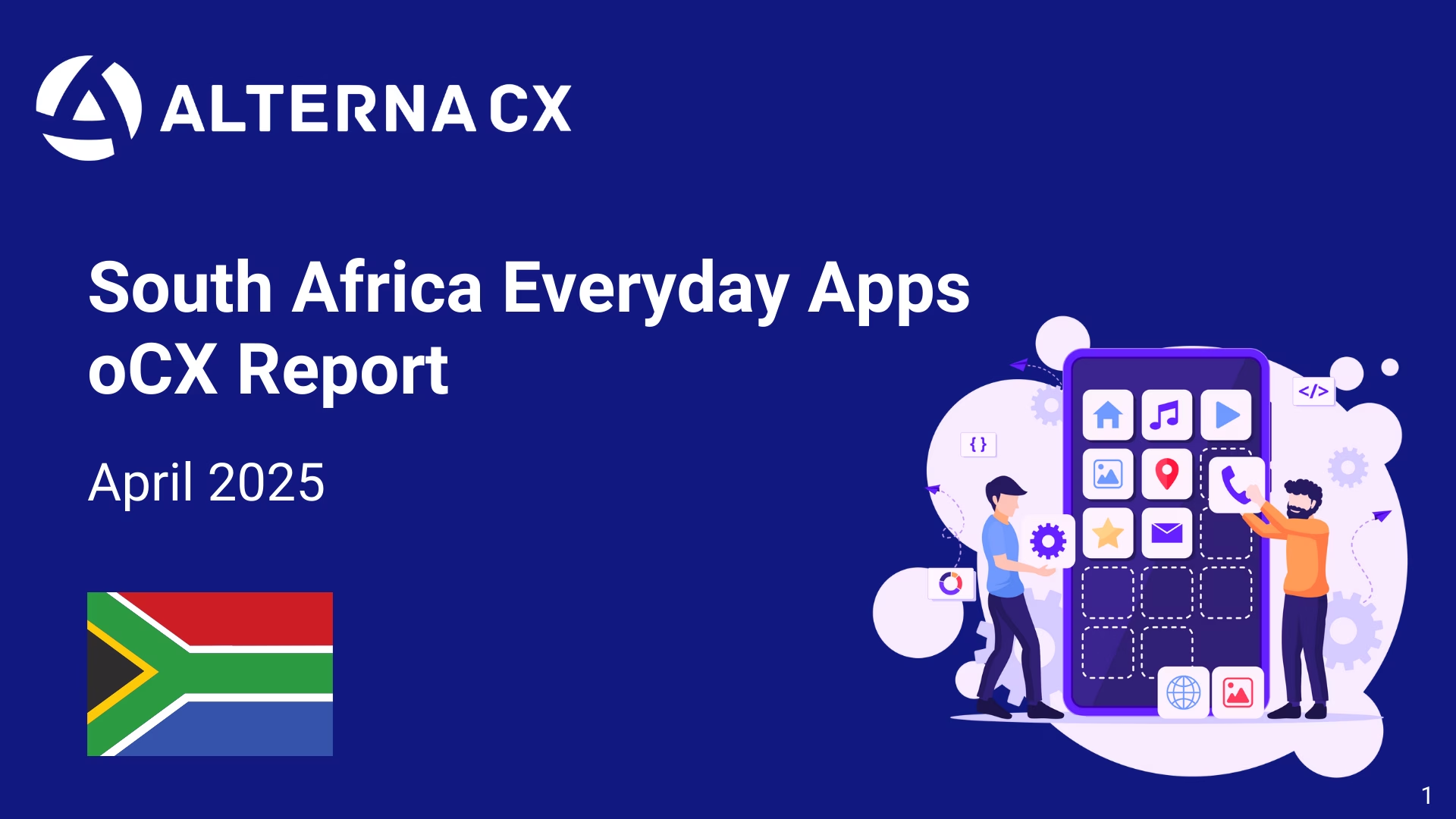In the competitive world of South African e-commerce, not all digital shopping experiences are created equal. The recent South Africa Everyday Apps oCX Report by Alterna CX reveals a stark divide between the market leaders and the rest of the pack—a gap so significant it challenges our understanding of what’s possible in digital retail.
A Tale of Two Experiences
The top three retail apps in South Africa—Takealot, My Runway, and Superbalist—aren’t just performing better than their competitors; they’re playing an entirely different game. With an average oCX score of 75 compared to a mere 1 for all other retail apps, the divide isn’t incremental—it’s fundamental.
This 74-point gap represents the most dramatic performance difference in any sector analyzed in the report. For perspective, even the struggling communication and entertainment sector only shows a 49-point difference between its best and worst performers.
The Numbers Behind the Excellence
The sentiment analysis paints an even clearer picture of this divide:
- Top 3 Apps: 86% positive sentiment, just 4% negative, with 10% neutral
- Rest of Retail Apps: 47% positive sentiment, 34% negative, with 19% neutral
When nearly 9 out of 10 users express positive sentiments about the leading apps while almost half of users feel similarly about others, we’re witnessing not just better execution but a fundamentally different approach to digital retail.
What Sets the Leaders Apart?
Examining Takealot—the highest performer with an oCX score of 83—provides insights into what drives this exceptional performance:
1. Near-Perfect App Usability
While the retail sector averages a respectable 71% positive sentiment on ease of use (already the highest among all sectors), Takealot achieves an extraordinary 92% positive sentiment with only 2% negative—dramatically outperforming even its strong sector average.
This exceptional usability isn’t just a technical achievement—it represents a different philosophy about how digital retail should function. Where many apps focus on feature density, Takealot has prioritized intuitive navigation and frictionless experiences.
2. Service Excellence at Scale
The top performers have achieved what many consider impossible: exceptional service quality at massive scale. Takealot maintains 93% positive sentiment for service quality compared to the sector average of 87%—impressive in isolation, but remarkable when considering the volume of transactions they handle.
This suggests the leading apps have recognized that in digital retail, service quality isn’t just a support function—it’s part of the core product experience.
3. Product Quality and Representation
Perhaps most impressive is how these apps have solved the inherent challenge of online retail: accurately representing physical products in a digital environment. With 97% positive sentiment for product quality (Takealot), these apps have nearly eliminated the traditional “expectation vs. reality” gap that has plagued e-commerce since its inception.
Trust Through Consistency
The report reveals another critical advantage: consistency. The top three retail apps (Takealot, My Runway, Superbalist) maintained trust scores above 91 throughout the year, while other retail apps fluctuated significantly.
This consistency isn’t accidental. Where lower-performing apps show volatile oCX trends—particularly during update cycles—the leaders maintain stable experiences even through technological transitions. This suggests a more disciplined approach to platform evolution that prioritizes user experience continuity over rapid feature deployment.
(Takealot, My Runway, Superbalist)
The Price of Falling Behind
For the rest of the retail apps with their average oCX score of just 1, the consequences extend beyond mere statistics. With 34% negative sentiment compared to the top performers’ 4%, these apps face a much higher customer acquisition cost and dramatically lower retention rates.
In practical terms, this means:
- Higher marketing costs to replace churned customers
- Lower average order values as consumers limit their exposure to potentially frustrating experiences
- Reduced opportunity for organic growth through word-of-mouth and social sharing
Closing the Gap: Is It Even Possible?
The 74-point oCX gap between leaders and the rest raises an important question: is this a fixable problem, or have the leaders established an insurmountable advantage?
The data suggests that incremental improvements won’t be sufficient. When Takealot achieves 92% positive sentiment on app usability compared to much lower figures for others, minor interface adjustments or feature additions won’t bridge the gap.
Instead, the lagging apps require a fundamental rethinking of their approach to digital retail—one that treats the app not as a supplementary channel but as the primary customer experience. This means:
- Elevating user experience design to a strategic priority rather than a technical consideration
- Implementing rigorous quality control around product representation
- Developing service frameworks specifically designed for digital contexts, not adapted from physical retail
Conclusion: A New Standard of Excellence
The exceptional performance of Takealot, My Runway, and Superbalist doesn’t just set a benchmark for South African retail apps—it establishes a new standard for what digital retail experiences can and should be.
With an average oCX score of 75 versus just 1 for other retail apps, the leaders aren’t incrementally better—they’re playing a different game entirely. For consumers, this means the difference between frustration and delight. For businesses, it represents either a competitive moat or an existential threat.
As South Africa’s digital economy continues to evolve, this performance gap will likely determine which retail brands thrive in the next decade and which fade into irrelevance. The message from consumers is clear: the exceptional experience offered by the top performers is now the expectation, not the exception.
The question facing every retail app outside the top tier isn’t how to improve marginally—it’s how to transform fundamentally.




